 Technology
Technology  Technology
Technology  Humans
Humans 10 Everyday Human Behaviors That Are Actually Survival Instincts
 Animals
Animals 10 Animals That Humiliated and Harmed Historical Leaders
 History
History 10 Most Influential Protests in Modern History
 Creepy
Creepy 10 More Representations of Death from Myth, Legend, and Folktale
 Technology
Technology 10 Scientific Breakthroughs of 2025 That’ll Change Everything
 Our World
Our World 10 Ways Icelandic Culture Makes Other Countries Look Boring
 Misconceptions
Misconceptions 10 Common Misconceptions About the Victorian Era
 Mysteries
Mysteries 10 Strange Unexplained Mysteries of 2025
 Miscellaneous
Miscellaneous 10 of History’s Most Bell-Ringing Finishing Moves
 Technology
Technology Top 10 Everyday Tech Buzzwords That Hide a Darker Past
 Humans
Humans 10 Everyday Human Behaviors That Are Actually Survival Instincts
 Animals
Animals 10 Animals That Humiliated and Harmed Historical Leaders
Who's Behind Listverse?

Jamie Frater
Head Editor
Jamie founded Listverse due to an insatiable desire to share fascinating, obscure, and bizarre facts. He has been a guest speaker on numerous national radio and television stations and is a five time published author.
More About Us History
History 10 Most Influential Protests in Modern History
 Creepy
Creepy 10 More Representations of Death from Myth, Legend, and Folktale
 Technology
Technology 10 Scientific Breakthroughs of 2025 That’ll Change Everything
 Our World
Our World 10 Ways Icelandic Culture Makes Other Countries Look Boring
 Misconceptions
Misconceptions 10 Common Misconceptions About the Victorian Era
 Mysteries
Mysteries 10 Strange Unexplained Mysteries of 2025
 Miscellaneous
Miscellaneous 10 of History’s Most Bell-Ringing Finishing Moves
10 Imposters Who Tried To Live A Life That Wasn’t Theirs
With advances in DNA techniques, the days of an impostor posing as a long-lost relative is all but over. Proving a familial relationship can be solved by a simple blood test.
See Also: Top 10 Influential People Who Never Lived
However, before DNA was heard of it was a much more subjective process, especially if a long period of time has passed. Identification relied on documents, which can be forged, and eye-witnesses who can be mistaken.
Or bribed.
Here are 10 impostors who tried to live a life that wasn’t theirs.
10Jeanne Calment
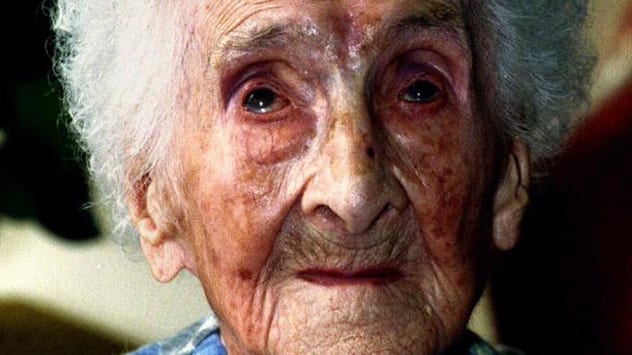
Jeanne Calment was known as the world’s oldest woman, dying at the ripe old age of 122. However, research by a group of Russian researchers suggests that Calment was, in actual fact, only 99.
According to a mathematician and a gerontologist (gerontology being the study of aging), the real Jeanne Calment died in 1934 at the age of 59. They believed that her daughter, Yvonne, assumed her mother’s identity in order to avoid paying large amounts of inheritance tax.
It is claimed, the mother was buried under the daughter’s name, and her death certificate was issued without confirmation from a doctor or coroner. Yvonne’s husband never remarried, and lived for many years with his ‘mother-in-law’.
Calment certainly looked good for her age, and bore a striking resemblance to her daughter in the few photographs that exist. Calment ordered that her personal papers be destroyed after her death.
The researchers interviewed Jeanne Calment and asked her questions about her childhood. While it is true that she made several errors, it was a long time ago. By the time of Jeanne’s death, in 1997, she was the longest-lived human by a considerable margin, having over 3 years on her closest rival.
Only an exhumation and DNA test can conclusively establish whether Jeanne Calment was really 122 when she died. Either way, mother and daughter are finally laid to rest together, and no one is willing to dig them up.[1]
9 Roger Tichborne
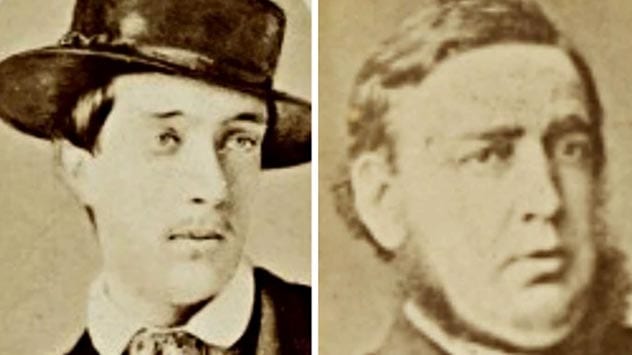
Roger Tichborne was the eldest son in a wealthy Victorian family who was lost at sea when his ship sank in bad weather in the middle of the Atlantic. His mother refused to believe that he was dead and placed adverts in newspapers all over the world, seeking information.
Ten years passed, then Lady Tichborne received a letter from the long-lost heir in Australia. This man had an Australian accent, rather than the expected French. But, then, he had been away a long time. He was fatter than he had been, but his diet may have suffered without his home-cooked meals. He was also several inches shorter than Tichborne, which would, ordinarily, have been a deal breaker. However, Tichborne had had a particularly distinguishing, but not immediately obvious, characteristic—deformed genitals. An inspection showed that, in this respect at least, the claimant measured up. Lady Tichborne declared to be her son.
In order to reclaim his inheritance, Tichborne needed to prove his identity in court. At the trial, several witnesses claimed that Tichborne was, in fact Arthur Orton from Wapping. The case collapsed after Tichborne was asked about the contents of a sealed envelope that had been left in the care of his estate manager before he went away. Tichborne said it contained provisions in case the ‘high-born lady’ he was sleeping with turned out to be pregnant.
He guessed wrong.
The false Tichborne, who was never conclusively identified as Orton, or anyone else, was convicted on 32 counts of perjury, and sentenced to 14 years hard labor.[2]
8 Perkin Warbeck

If you are going to impersonate someone, why not think big? This, presumably, must have been Perkin Warbeck’s thinking when he made his claim to be the rightful King of England.
Warbeck bore a passing resemblance to Edward IV, which may, or may not, have been a coincidence, but it lent credibility to Warbeck’s claim to be the Duke of York, one of the ‘Princes in the Tower’, imprisoned by dastardly King Richard II in the Tower, and therefore, the rightful king.
He found supporters for his cause, some of whom may have believed him. Many, however, were desperate for a legitimate reason to overthrow Henry VII who had deposed Richard to set up a new Tudor dynasty. If they could prove Warbeck’s claim before Henry became established as King, they might succeed.
In 1496, James IV of Scotland invaded England with Warbeck by his side, but they were quickly repelled. Warbeck organised several more invasions before being captured in 1497, when he surrendered to the King, and retracted his claim to the throne.
For a while, it seemed that Warbeck was forgiven. He was entertained at Henry’s court and even attended royal banquets, though he was kept under guard. However, when he tried to escape, he was captured and sent, perhaps for the second time, to the Tower of London, before being hanged in 1499.[3]
7The False Dmitry

Dmitry, the youngest son of Czar Ivan IV, also known as Ivan the Terrible, was supposed to have died in 1591, after cutting his own throat. Some, however, believed that he had been murdered by the usurper Boris Godunov, or that he had escaped.
Three other people came forward claiming to be a Dmitry who had escaped his assassins, but only one of the False Dmitrys, as they became known, went on to become Czar. In 1603, our Dmitry began to amass an army against Boris Godunov. Godunov declared that Dmitry was in fact, Grigory Otrepev, a runaway monk.
Dmitry began his uprising, just as Godunov died. Almost without opposition, Dmitry marched into Moscow as undisputed Czar. He ruled for a year, and was reasonably popular with his subjects.
Dmitry married in 1606, but in the middle of the wedding celebration, a riot broke out, and rebels stormed the Kremlin and killed the Czar.
Many people hoped that Dmitry had, once more, managed to escape his assassins, and a civil war was fought in his name, leading to several more hopefuls, with dreams of the Imperial Crown, to claim to be either the Original Dmitry, back from the dead, or the Back From the Dead Dmitry, back from the dead.
It can never be known for sure whether the body that was dumped in Red Square was really that of the son of Ivan the Terrible, but historians think that it is unlikely.[4]
6 Paul Tagaris
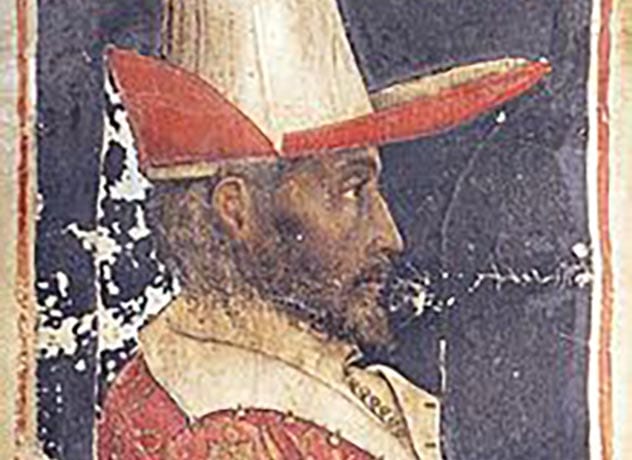
Paul Palaiologos Tagaris was a Byzantine monk who claimed a royal lineage.
Tagaris got ordained as a priest in the Greek Orthodox church in Jerusalem in order to get away from his wife. He clearly had charisma, and, in respect of his royal heritage, was given a post of authority over bishops in Jerusalem. Whereupon, he sacked the bishops, and sold their sees.
He gave himself the title Patriarch of Jerusalem, and just before he was arrested, he fled to Rome, where he presented his credentials to the Pope, publicly confessed his sins, pledged his allegiance to the Catholic Church, was forgiven, and given the title of Latin Patriarch of Constantinople.
His epiphany seems to have been short lived, since it was not long before the clergy of his new diocese were complaining about the taxes he levied on them. He fled again, this time to Avignon where a rival pope sat, and confessed once more.
It didn’t last.
He returned to Constantinople, made a final dramatic confession, renounced Catholicism, and was again forgiven. It is not recorded whether this new epiphany was genuine, but the odds seem against it.[5]
5James Reavis
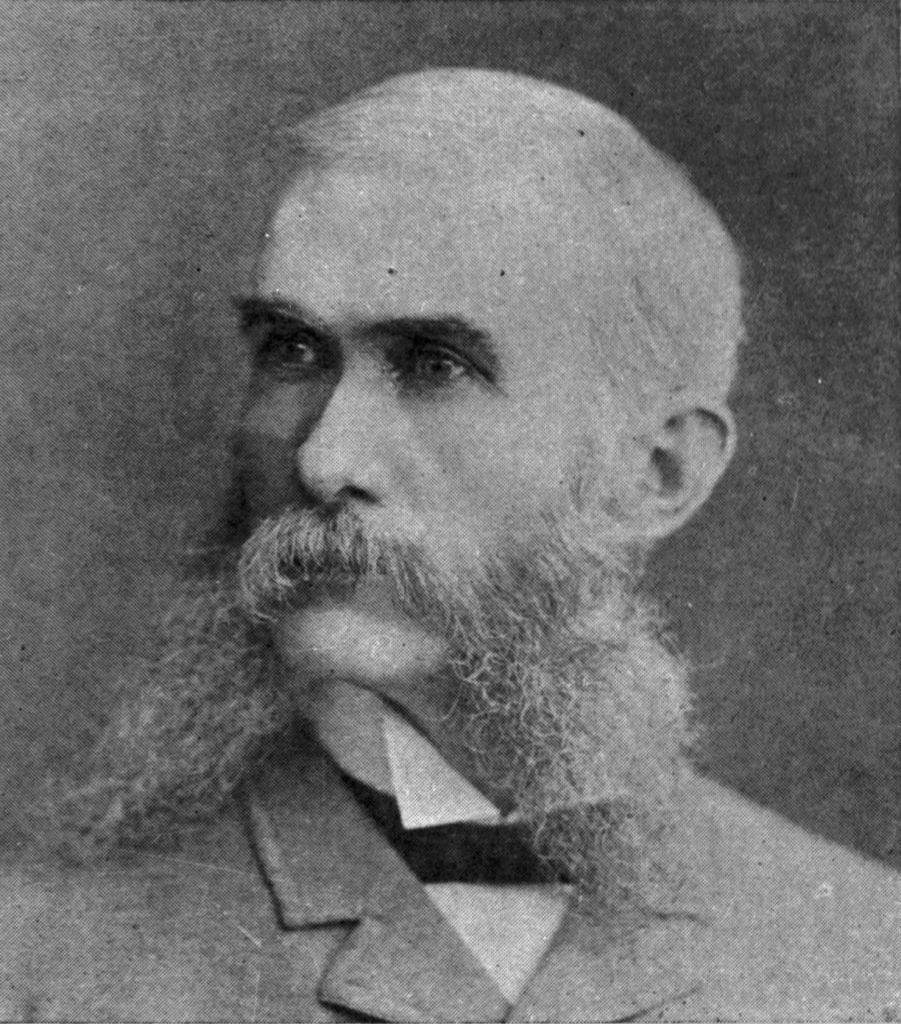
James Reavis was a pragmatist. During the Civil War he enlisted with the Confederates and developed a profitable side-line, selling forged leave passes.
When he was about to get caught, he fled, and joined the Union army.
After the war, he began to fake land titles. He created a number of documents relating to his ‘ancestor’, who, apparently, worked for King of Spain, and had been appointed the Baron of Arizona. Along with the title, of course, the King presented Reavis’ forebear with a large parcel of land to be passed down the generations.
Which was handy.
Whilst waiting for his claim to be assessed, Reavis made a deal with a railroad company for access to the land, netting him a tidy fortune. He also sold quitclaims, selling titles for land he did not own.
When it looked like he may lose his claim, Reaves went to Spain ‘looking for evidence’. Soon after he visited an archive, documents would be discovered by the archivists. Though it was suspected he was planting documents, it could not be proved.
His land claim was eventually dismissed, and he was convicted of forgery, receiving a two-year sentence and a $5,000 fine.
Which seems rather lenient considering how much money he made from his cons.[6]
4 Natalya Bilikhodze
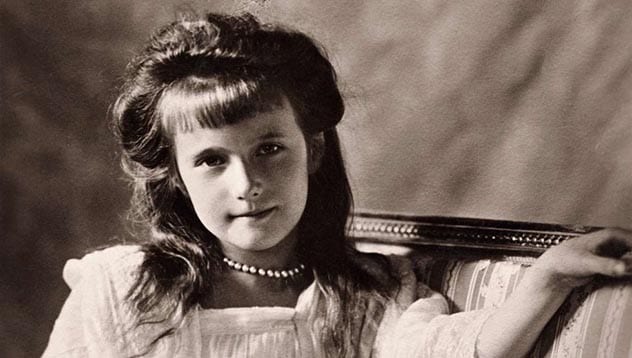
In 2002, a press conference was called, and statement by video staked Natalya Bilikhodze’s claim to be Anastasia, the youngest child of Czar Nicholas II. Despite almost certainly being assassinated by Bolsheviks, 1918, the rumor has persisted she somehow escaped.
Though there have been many Anastasia claims, Natalya Bilikhodze’s will almost certainly be the last one. Anastasia would then have been 101.
Anastasia had been living in obscurity in Georgia, but a committee had been formed to prepare her ‘homecoming’ to Moscow. Although her exact location was kept secret, the committee’s chairman that they wanted to ‘restore the honorable name of Anastasia’.
Which is admirable, maybe.
They also wanted the billion-dollar Romanov inheritance to be handed over as soon as her identity was confirmed.
Ah.
While it may not come as a surprise that the Grand Duchess of the Romanovs was not, in fact, still alive, what was surprising, was that Natalya Bilikhodze wasn’t either. The video testimony of the ‘heiress’ had been made several years before, and Natalya herself had died 2 years earlier. She was buried without the benefit of a state funeral.
When this was discovered, the committee seemed to dissolve overnight, and the chairman lost interest in restoring Anastasia’s honor.[7]
3 Martin Guerre
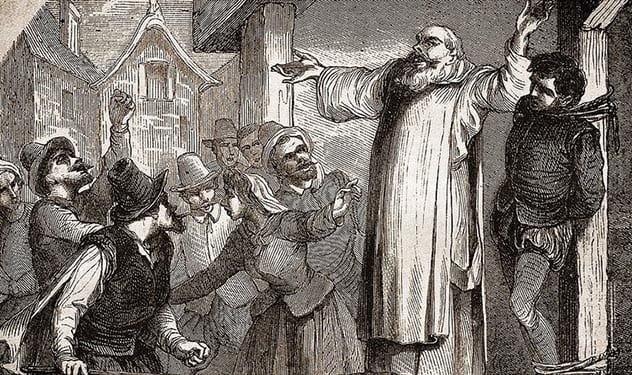
Probably the most famous impostor of all time, Martin Guerre was a peasant in 16th century France who married up. In 1548, he was accused of stealing from his own father, and absconded in the middle of the night.
For 6 years his wife was alone, unable to divorce him and unable to prove that he was dead, which was a difficult position for a woman at that time. So, when Martin suddenly reappeared, she was probably almost as relieved as she was angry.
Though some people doubted New Guerre’s identity, he did look a little like Old Guerre, in height and build, and he certainly seemed to remember them. New Guerre lived happily with his reunited family for 3 years, until he decided to sue his uncle for an inheritance that had passed him over during his absence.
Uncle Guerre was not a believer. When a passing stranger told him that the real Guerre had lost his leg and that New Guerre was a fraud, he investigated further, and discovered that Arnaud du Tilh, from a nearby village, was missing and looked a lot like New Guerre. After much persuasion, he convinced Martin Guerre’s wife to file a suit against him.
At the trial, Guerre’s wife gave evidence against him with reluctance. New Guerre challenged her to declare him a fraud, saying that if she did, he would willingly be executed. She stayed silent. Despite his wife’s refusal to condemn him the trial continued with over 150 witnesses to his identity called. Many affirmed that he was the Real Guerre, including Martin Guerre’s 4 sisters, and many declared him to be Amaud Du Tilh. In the confusion, Guerre was convicted, and sentenced to death.
New Guerre appealed, and his wife and uncle were arrested for perjury, with New Guerre testifying that his wife had been intimidated by his uncle. He was questioned in detail about his past and answered them all.
The judges were about to acquit him, when a man with a wooden leg turned up, claiming to be the Real Martin Guerre. This man, too, was questioned about his past, and his memory was found to be faulty at a number of points. Damningly, however, when New New Martin Guerre was presented to his wife, uncle and sisters, they all agreed instantly that he was the Real Martin Guerre.
Amaud du Tilh was convicted of fraud, and afterwards confessed that he had several times been mistaken for Guerre because of their likeness, and, on finding that there was an inheritance to be claimed, bribed people who had known the family to give him information.
Tilh was hanged in front of Martin Guerre’s house a few days later.[8]
2 Mary Baynton

If you lived in a remote village in 16th Century England, and a stranger arrived professing herself to be the daughter of the king, you might a little nervous. If that king was Henry VIII, famous for his bad temper and tendency to chop off people’s heads, you might be very nervous.
So, when Princess Mary arrived unexpectedly in a village in Lincolnshire, no one was brave enough to challenge her identity. Princess Mary was, she claimed, the daughter of Henry and Katherine of Aragon, his first wife. She also told of a prophecy made by the Queen of France that Mary “would one day face great hardship”.
She was, she said, trying to make her way to Spain, where she would be safe. The place she had chosen to stay was, perhaps coincidentally, a region known for its sympathies towards Mary Tudor, whose future claim to the throne was being ignored.
She did solicit money for her escape, claiming that the king had abandoned her, but it is believed that the amounts she received were relatively small. It is probably also true that many people would have known that their ‘Princess Mary’ was not Mary Tudor, but they treated her as a kind of mascot for their cause.
Princess Mary was in fact, plain old Mary Baynton. In 1533, she was arrested and recanted her claim to royal status.
She was never heard from again. Unfortunately for Mary Baynton, and indeed for Mary Tudor, the aunt’s prophecy about one day facing great hardship, turned out to be true.[9]
1 The Countess of Derwentwater
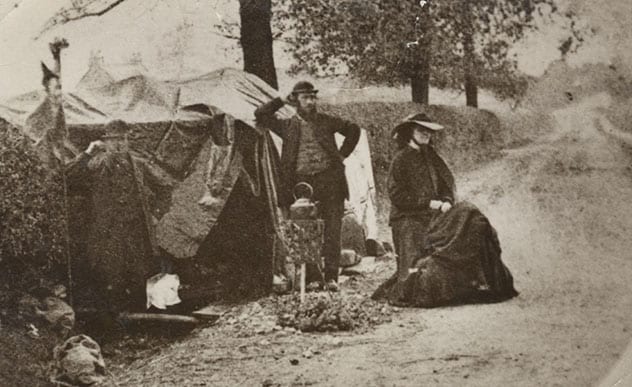
In 1857, a woman with the improbable name of Lady Amelia Matilda Mary Tudor Radcliffe filed a claim to the defunct state of Derwentwater. She was, she claimed, the granddaughter of the 4th Earl of Derwentwater who had died 120 years earlier, supposedly without an heir.
She said the Earl had abandoned his family during the Jacobite rebellion, and had faked his own death. The Countess provided a complete family tree to back her claim. Lady Amelia, as she was known to her friends, brought along documents, portraits, and even family jewels to support her claim to the land, which now belonged to the trustees of a hospital.
Her claim was dismissed.
Undeterred, Lady Amelia went to the press, and impressed many readers with her credibility. Many contributed money to ‘her cause’. In 1868, she broke into the ruined Derwentwater mansion, whilst dressed in royal-ish regalia, including the ‘sabre of her sires’ which was slung around her waist. She hoisted her family flag over the ruined tower and put the family portraits on the wall.
When the hospital evicted her, carrying her bodily from the building in front of the press and public, she set up camp on the road outside, attracting much sympathy for this ‘distressed gentlewoman’. Lady Amelia began to collect rent from ‘her tenants’ and even auctioned off property and livestock owned by the hospital.
The hospital sued, and she was fined £500 and the Countess was forced to sell off her family heirlooms to pay the debt.
Historians are certain that there never was a Countess of Derwentwater, and no one really knows who the impostor really was or where she came from. The heirlooms she sold turned out to be rather clumsy fakes and the family portraits had been painted by the ‘Countess’ herself.[10]
For more lists like this check out Top 10 People Famous For Doing Things They Didn’t Do, and 10 People Who Just Didn’t Know When To Shut Up.








